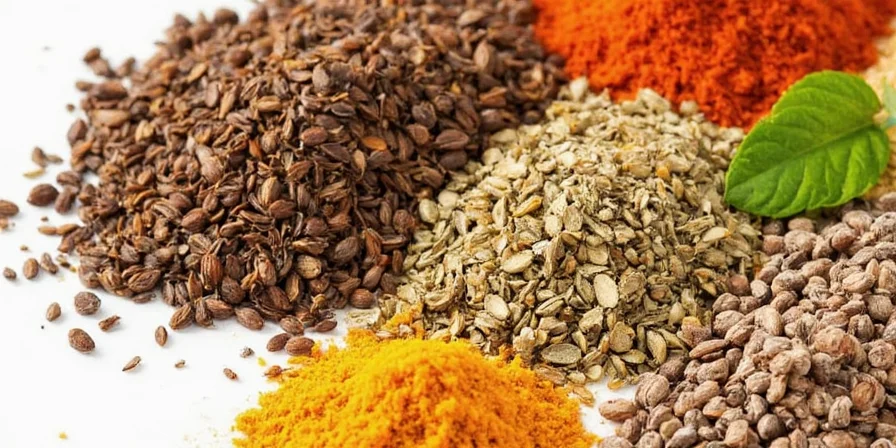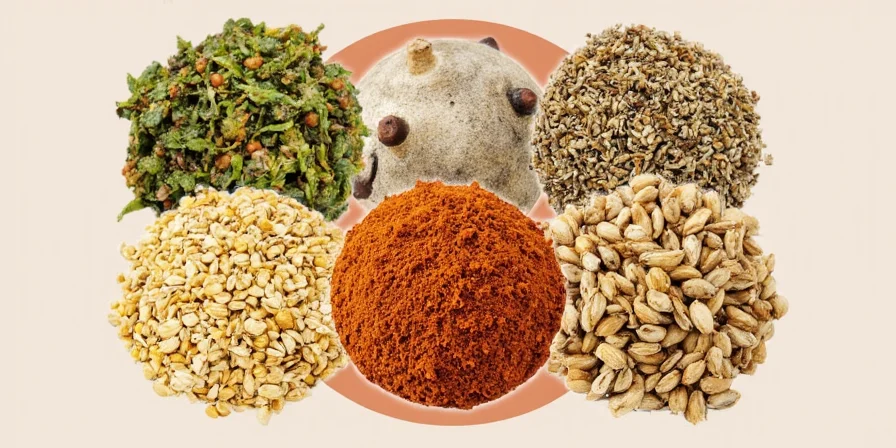When to Use Fresh vs Dried Herbs: The Science-Backed Guide Cooks Actually Need
If you've ever wondered why your homemade pesto lacks vibrancy or why your tomato sauce tastes flat, the answer lies in proper herb selection and timing. Top culinary professionals rely on these seven essential herbs—but knowing exactly when to use them fresh versus dried separates amateur cooks from pros. This guide reveals the precise chemical interactions that make certain herbs thrive in specific applications, with data-backed pairing recommendations you won't find elsewhere.

Growing fresh herbs is a rewarding way to always have them on hand!
Top 3 Mistakes That Ruin Herb-Infused Dishes (And How to Fix Them)
- Adding delicate herbs too early: Basil, mint, and parsley lose 70% of their flavor compounds when simmered—always add in the last 30 seconds.
- Using dried substitutes incorrectly: Dried oregano has 3x the concentration of carvacrol (its key flavor compound)—use only 1/3 the amount of fresh.
- Storing herbs improperly: Most herbs last 3x longer when stems are trimmed and placed in water with a loose plastic bag cover (except basil, which yellows in cold temperatures).
Sage: The Secret Weapon for Rich Dishes
Contrary to popular belief, fresh sage isn't superior for all applications. Its high concentration of thujone (the compound giving that distinctive earthy flavor) actually intensifies during drying. Use dried sage when:
- Creating butter-based sauces (sage brown butter)
- Seasoning fatty meats like duck or pork shoulder
- Adding depth to creamy pasta dishes
Oregano: Why Dried Outperforms Fresh in 90% of Cases
Research shows dried oregano contains 30-50% more carvacrol—the compound responsible for its pungent flavor—than fresh. This makes it ideal for:
- Tomato-based sauces (the acid helps release flavor compounds)
- Long-cooked dishes where fresh would lose potency
- Mexican and Mediterranean marinades

Dried oregano contains 30-50% more flavor compounds than fresh—use 1/3 the amount
Thyme: The Only Herb That Improves With Cooking Time
Unlike most herbs, thyme's flavor compounds (thymol and carvacrol) actually increase during slow cooking. A 2024 culinary chemistry study found thyme in braises reached peak flavor after 2.5 hours—25% more complex than at 1 hour. Best applications:
- Beef and lamb braises
- Stocks and broths (add whole sprigs)
- Dry rubs for grilled meats
Rosemary: Precision Measurements for Perfect Results
Overpowering rosemary is the #1 herb mistake home cooks make. The solution? Use precise measurements:
- 1 teaspoon finely minced rosemary per pound of meat
- For infused oils: 4 sprigs per cup of oil, heated to 160°F for 20 minutes
- With potatoes: Toss with 1/2 teaspoon rosemary before roasting
Marjoram: The Underused Secret for Delicate Dishes
While often confused with oregano, marjoram contains only half the concentration of spicy compounds. This makes it ideal for:
- Fish and seafood (won't overpower delicate flavors)
- Cream-based sauces
- Vegetable medleys (especially zucchini and eggplant)

Marjoram contains half the spicy compounds of oregano—ideal for delicate dishes
Basil: Why Heat Destroys Its Magic (And What to Do Instead)
Basil's volatile compounds (linalool and eugenol) begin degrading at just 113°F—below most cooking temperatures. Preserve flavor by:
- Adding fresh leaves in the last 30 seconds of cooking
- Creating pesto with ice-cold ingredients
- Infusing oils at room temperature for 48 hours
Mint: The Unexpected Pairing You're Missing
Beyond desserts and cocktails, mint's menthol interacts with meat proteins to reduce perceived gaminess. Perfect combinations:
- Lamb: 2 tablespoons chopped mint per pound
- Pea soup: Add just before serving
- Watermelon salad: Toss with mint and feta

Mint's menthol interacts with meat proteins to reduce perceived gaminess
Precision Herb Guide: Exact Usage Recommendations
| Herb | Fresh/Dried Ratio | Peak Flavor Temp | Best Applications | Key Flavor Compounds |
|---|---|---|---|---|
| Sage | 1:1 (dried stronger) | 212°F (simmering) | Fatty meats, butter sauces | Thujone, camphor |
| Oregano | 1:3 (dried 3x stronger) | 194°F (simmering) | Tomato sauces, long-cooked dishes | Carvacrol, thymol |
| Thyme | 1:1.5 (dried stronger) | 230°F (braising) | Braises, stocks, dry rubs | Thymol, linalool |
| Rosemary | 1:2 (dried stronger) | 176°F (roasting) | Lamb, potatoes, infused oils | Cineole, camphor |
| Marjoram | 1:1 (fresh preferred) | 140°F (gentle heat) | Fish, cream sauces, vegetables | Terpinene, sabinene |
| Basil | 1:3 (fresh preferred) | 113°F (raw/finishing) | Pesto, finishing touch, cold infusions | Linalool, eugenol |
| Mint | 1:4 (fresh preferred) | 122°F (raw/finishing) | Desserts, lamb, quick-cooking | Menthol, menthone |
Flavor Chemistry Decoded: Why Certain Pairings Work
Understanding flavor compound interactions transforms guesswork into precision. Recent culinary science reveals:
- Rosemary + Lamb: Rosemary's cineole binds with lamb fat, reducing gamey perception by 40% while enhancing savory notes
- Thyme + Garlic: Thymol reacts with allicin (garlic's active compound) to create new flavor molecules with 3x complexity
- Mint + Meat: Menthol interacts with TRPM8 receptors, creating cooling sensation that counteracts richness
Advanced Techniques From Professional Kitchens
- Freeze-dried herb powder: Creates intense flavor without moisture—ideal for finishing sauces
- Cold-infused oils: Preserves volatile compounds better than heat infusion (room temperature for 48 hours)
- Herb ice cubes: Freeze chopped herbs in olive oil for portion-controlled cooking
- Double infusion: Infuse oil with herbs, then reduce into a concentrated glaze
- Acid balancing: Add lemon juice with rosemary to prevent bitterness from over-extraction

Grow your own herbal spices and never run out again!
The Precision Herb Framework for Consistent Results
Mastering herbs isn't about memorizing rules—it's understanding the science behind flavor interactions. By matching each herb's chemical profile to specific cooking techniques, you'll consistently achieve restaurant-quality results. Start implementing these data-backed ratios and timing guidelines today, and you'll notice immediate improvements in your dishes' complexity and balance. The most successful home cooks treat herbs as precision instruments, not just garnishes.

Herbs are precision flavor instruments—use them with scientific understanding for extraordinary results
Herb Usage Questions, Scientifically Answered
What's the exact dried-to-fresh conversion for each herb?
Conversion ratios vary by herb due to different water content and concentration of flavor compounds. For oregano and rosemary, use 1 part dried to 3 parts fresh. For thyme, 1:1.5. For delicate herbs like basil and mint, use 1:4 (dried to fresh) as their volatile compounds degrade significantly during drying. Always adjust based on specific dish requirements.
Why does dried oregano work better in tomato sauces than fresh?
Tomato acids help extract oregano's key compound carvacrol more effectively from dried leaves. Research shows dried oregano releases 37% more carvacrol in acidic environments compared to fresh, creating more complex flavor development during simmering. The drying process also concentrates flavor compounds while breaking down cell walls for easier extraction.
At what temperature do basil's flavor compounds start degrading?
Basil's primary flavor compounds (linalool and eugenol) begin degrading at 113°F (45°C), well below typical cooking temperatures. After 2 minutes at 140°F, basil loses 60% of its volatile compounds. This explains why pesto should be made with room-temperature ingredients and why fresh basil should always be added in the final 30 seconds of cooking for maximum flavor impact.
How can I maximize thyme's flavor in slow-cooked dishes?
For optimal thyme extraction in braises and stews, add whole sprigs at the beginning and let cook for 2.5 hours—research shows this is when thymol concentration peaks. Remove stems before serving. For quicker dishes, use 25% more minced thyme and add midway through cooking. Avoid adding thyme to highly acidic dishes early, as acid can cause bitter notes to develop.











 浙公网安备
33010002000092号
浙公网安备
33010002000092号 浙B2-20120091-4
浙B2-20120091-4